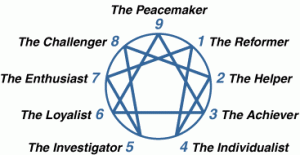I really hate it when people tell me I need to work on myself before pursuing a relationship with someone else.
Seriously, it’s probably one of my top ten pet peeves, next to guys who ask me out on Twitter. It always comes off as slightly condescending when another person assumes that because I’m single, I don’t possess some vaguely defined amount of self-knowledge and superior morality that every married person in the world must already have.
 But even so, I am reminded nearly every day that a part of me is fundamentally broken. I don’t think this is a singleness problem, but a human problem.
But even so, I am reminded nearly every day that a part of me is fundamentally broken. I don’t think this is a singleness problem, but a human problem.
We all have a part of us that Thomas Merton calls the false self. This is the part that seeks our own comfort and covers up our flaws and likes to pretend like we already have it all figured out. One of the best ways I’ve found to break through this false self is through the Enneagram.
 The Enneagram (pronounced “any-uh-gram”) is a system that groups personality types into nine basic categories. Like the more commonly-known Myers-Briggs Type Indicator, our type helps us to better understand our strengths and weaknesses. However, the Enneagram goes a step further by forcing us to come to terms with ourselves in an even deeper way by acknowledging the root of our sin.
The Enneagram (pronounced “any-uh-gram”) is a system that groups personality types into nine basic categories. Like the more commonly-known Myers-Briggs Type Indicator, our type helps us to better understand our strengths and weaknesses. However, the Enneagram goes a step further by forcing us to come to terms with ourselves in an even deeper way by acknowledging the root of our sin.
In the book The Enneagram: Christian Perspective, Richard Rohr says “The Enneagram has emerged as a tool that is forcing many of us to a brutal and converting honesty about good and evil and the ways that we hide from ourselves and therefore hide from God.” Sometimes this sin isn’t an obvious moral failing, but a subtle pattern that keeps us from giving ourselves over fully to be transformed from the inside out.
Maybe my own obsession with the Enneagram started because my own type (Type 4) is said to have a strong desire to understand myself. However, the first time I read my type description, I was horrified. It was as if all of the deepest, darkest parts of me were all spilled out on that page, leaving me exposed. I read the descriptions of the other eight types as well, wishing I could have their character flaws instead of my own.
In spite of its brutal honesty, the most redeeming part of understanding yourself through the lens of the Enneagram is seeing your potential for growth. The Enneagram describes each type at their best and at their worst, giving each person a snapshot not only of who they are now, but of who they could be. Seeing how your greatest strengths correlate with your greatest weaknesses and understanding that others sometimes fail in the same ways can bring great healing.
The false self wants to stay stuck in comfort and self-pity, but Thomas Merton also says that “The true inner self must be drawn up like a jewel from the bottom of the sea, rescued from confusion, from indistinction, from immersion in the common, the nondescript, the trivial, the sordid, the evanescent.” By making little choices each day, you can inch closer to being the best version of yourself. You can be this person whether you are married or single, whether you are employed or unemployed, whether you are in the place we want to be or in a different place entirely. It’s incredibly freeing to realize that personal growth is not dependent on circumstances.
Though self-understanding isn’t a miracle cure for singleness, I do believe it can help us to think more clearly about relationships. After all, when I know what kind of person I am, I can also know what kind of person I am looking for. Recognizing healthy and unhealthy traits in myself has helped in a small way to prevent some of the pitfalls of a future relationship as I can recognize healthy and unhealthy traits in someone else, too.
If you would like to learn more about yourself through the Enneagram, there are some tools to help. While there are assessments to help you determine your type, I believe the most accurate way is to read each type description and try to recognize yourself. For some it will be obvious, but for others it may take some time. Each type has a wing, (meaning, you share some traits with one of the adjacent types), which helps to more specifically pinpoint your character traits. The Enneagram Institute is a good place to go first for information about the Enneagram and the nine types.
The Enneagram may not be for everyone, but it is one of many tools you can use to recognize your own tendencies and allow God to work in you. This may be what Paul was referring to in the book of Romans when he said, “ Do not conform to the pattern of this world, but be transformed by the renewing of your mind. Then you will be able to test and approve what God’s will is—his good, pleasing and perfect will.” (Romans 12:2, ESV)
When we recognize our need for redemption, we are fighting the human tendency to be stagnant. We are coming to a better understanding of the character of God and seeing his will woven into our lives. We are moving forward, even if circumstances stay the same. In any life stage, we can allow ourselves to be transformed.
Recommended reading:
The Enneagram: A Christian Perspective by Richard Rohr and Andreas Ebert
The Wisdom of the Enneagram by Don Richard Riso and Russ Hudson
New Seeds of Contemplation by Thomas Merton
To discover your type: Take an Enneagram test at the Enneagram Institute.
Photo credit: Unsplash